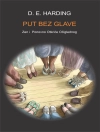Uses the figure of the mad poet to explore the connections between madness and creativity.
In The Abyss Above, Silke-Maria Weineck offers the first sustained discussion of the relationship between poetic madness and philosophy. Focusing on the mad poet as a key figure in what Plato called ’the ancient quarrel between philosophy and poetry, ’ Weineck explores key texts from antiquity to modernity in order to understand why we have come to associate art with irrationality. She shows that the philosophy of madness concedes to the mad a privilege that continues to haunt the Western dream of reason, and that the theory of creative madness always strains the discourse on authenticity, pitching the controlled, repeatable, but restrained labor of philosophy against the spontaneous production of poetic texts said to be, by definition, unique.
Innehållsförteckning
Acknowledgments
Abbreviations
Introduction: Future Perfect
Cassandra, or the Belated Truth of Madness
Total and Restricted Madness
The Limits of Madness and the Limits of Philosophy
From Divine Reason to Madness under the Death of God
Epilogue
1. Talking About Homer: Poetic Madness, Philosophy, and the Birth of Criticism
Talking about Homer
Phaedrus: Madly Made Meaning
Philosophy’s Mad Demon
2. The Abyss Above: Hölderlin: Madness, Philosophy, and Tragedy in the Absence of the Gods
Introduction: Madness and the Labor of Poetry
Translating Greece
Antigone and Oedipus: Madness and Sign
3. Nietzsche: The Marketplaces of Madness
Introduction: Nietzsche’s Madness and the Fear of Contamination
Nietzsche’s Madmen (1): The Artist in the Ditch, or from Metaphysics to Metaphysiology
Nietzsche’s Madmen (2): Meta-Morality, or the Madness of New Thought
Nietzsche’s Madmen (3): The Last Madman on the Marketplace
The Hyperborean: La Vache Qui Danse
Conclusion: Logos and Pallaksch: Paul Celan’s ’Tübingen, Jänner’
Anachrony
Appropriation
Anamnesis
Notes
Bibliography
Index
Om författaren
Silke-Maria Weineck is Assistant Professor of German Studies at the University of Michigan.












